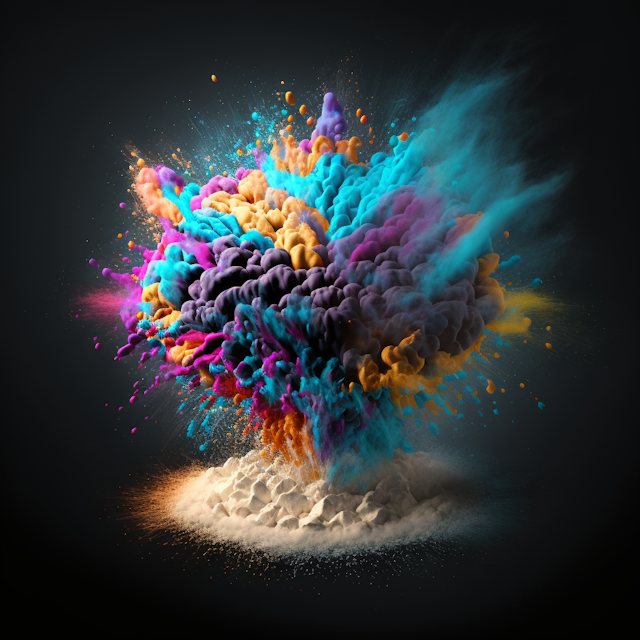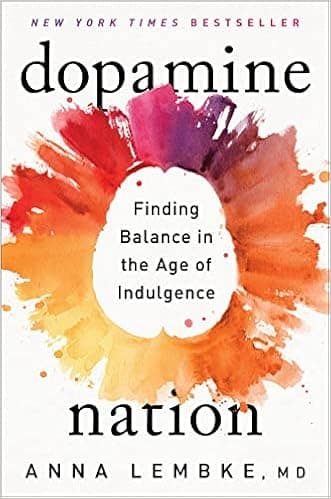Dopamine Nation: Finding Balance in the Age of Indulgence - Dr. Anna Lembke

Review date: January 16, 2023 — 5 min read
Book

Dopamine Nation: Finding Balance in the Age of Indulgence
Disclaimer: The below is by no means medical advice and should not be construed as such. Do not disregard medical advice or delay seeking medical advice because of information you have read on this website. If you struggle with addiction please seek professional help.
tl;dr
In life, we will inevitably stumble upon a potentially addictive vice. In a dopamine rich world, this is more likely than ever to happen. Be it drugs/alcohol, porn, gaming, gambling, social media, food or one of the other countless dopamine-on-demand alternatives. Drawing from research and anecdotes, Dr. Anna Lembke dives into how addictions form, the importance of finding and maintaining balance in our dopamine levels, how to guard against addiction and the impact of quick hit dopamine providers on society.
Summary
I decided to pick up Dopamine off the back of a number of recommendations. I expected it to be a lot of “phone bad, outdoors good” written from the perspective of a dopamine prig. Instead I found it to have far more depth and substance than I anticipated, with the author often putting herself and her own additions in the crosshairs.
Balance

As living creatures we are always striving for homeostasis - aka balance. When we do something difficult like exercise, we are rewarded with a nice little spike in dopamine (which in turn makes us feel good). Since our bodies are always leaning towards a neutral state, when we experience that spike we experience a corresponding ‘low’ to return to a neutral state. That’s all pretty normal.
The problem is we live in a world where we have access to monstrously potent dopamine providers - meaning on-demand massively powerful highs (and extremely devastating accompanying lows). Moreover, we are able to bypass the pain component that normally triggers a release in dopamine (e.g. going for a run).
The book unpacks the result of this world of excess and abundance through the lens of dopamine. The surplus of dopamine releasing events in the world means more addictions forming; our reward pathways are being hit with higher highs and corresponding lower lows, forming more gripping and enslaving addictions.
With this barrage of addictive substances, our base dopamine levels are continually in disarray. Dr. Anna Lembke, a psychiatrist, uses plenty of research papers and sessions with her clients to adduce the above ideas. In fact, she goes as far as to reveal her own addictions and the impact they had on her.
These demanding addictions mean achieving homeostasis requires us to jump off metaphorical cliffs to shift between highs and lows. Our struggle for balance has powerful repercussions on our mood, motivation, behaviour, anxiety and other emotions.
Maintaining balance
Each chapter of the book attempts to unpack a key component of dopamine and/or addiction.
The chapters also provide ways of mitigating the grip of addiction on our lives.
 The last page of the book provides this helpful summary of the book itself:
The last page of the book provides this helpful summary of the book itself:
-
Pursuing pleasure (and avoiding pain) leads to pain.
a. Our over consumption of dopamine has negative consequences on our overall state. b. The aggressive pursuit of pleasure can, ironically, lead to anhedonia (the inability to experience pleasure of any kind)
-
Recovery starts with abstinence. If we wait long enough, our brains usually revert to healthy baseline homeostasis.
-
Abstinence helps reset the brain’s reward pathway, meaning our mood, reasoning and emotions will level out and we'll start to see and think more clearly. Moreover, we'll start to enjoy the simpler pleasures more easily and readily.
-
Use self-binding mechanisms (restrictions/rules for accessing our dopamine releasing addictions) to limit exposure to dopamine in a dopamine heavy world.
-
Medication can restore balance but is not without its own downsides.
a. Medication may limit our capacity to fully experience emotions.
-
Pain can help reset our balance on the pleasure side.
a. Think: running, ice baths, doing things we know require effort, etc.
-
Be careful of becoming addicted to pain. We don’t need more addictions.
-
Honesty (about our addictions) creates accountability, awareness and fosters a healthy mindset.
-
There are some social settings that affirm and reward positive behaviour.
a. For example, AA encourages avoidance of alcohol and the guilt of lapsing affirms non-addictive behaviour. Moreover, we feel a sense of belonging and will be motivated to overcome/resist our addictions.
-
There world is beautiful, complicated, difficult, scary and majestic and instead of running from it we should immerse ourselves in it.
Takeaways
Dopamine enriched my understanding of addiction and how our brains work. Especially the negative side of seemingly innocent addictions.
We’d be wise to do a dopamine/addiction audit of ourselves and see where we can start to wean ourselves off our vices. Additionally, it left me motivated to try to find the joys in the simpler things in life. This means putting some space between me and the countless dopamine-filled creatures circling at all times.